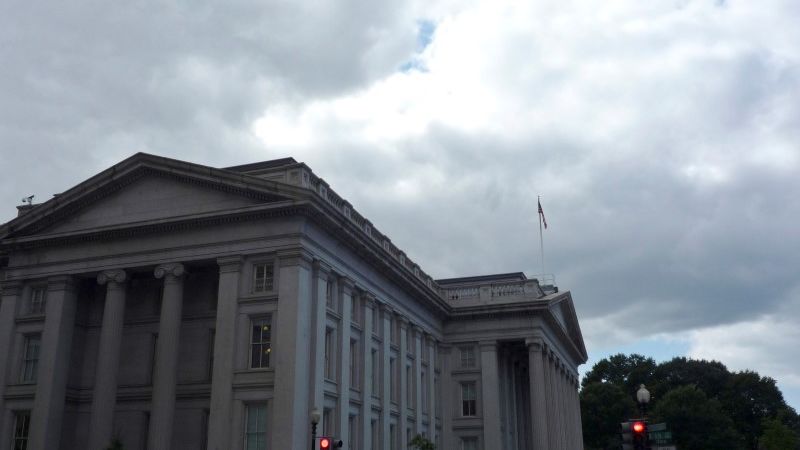De-risking, the method that allows banks to end their relationships with certain customers in order to curb financial or criminal risks, is being discouraged by the US government
The U.S. Treasury Department has issued a first-of-its-kind document laying out the government’s plan to combat so-called de-risking, the practice by which financial institutions sever ties to entire categories of customers rather than managing their financial crimes risks.
It remains to be seen whether the Treasury’s document will have any impact on de-risking, but experts expressed well-founded skepticism following its release last week.
De-risking has been a major issue in the United States since shortly after the 9/11 terrorist attacks and the enactment of the USA PATRIOT Act of 2001. At the time, embassies, money services businesses, and charities were the first sectors to be seen as too risky, or as posing too high a compliance cost, to banks. In recent years, however, de-risking has grown in the correspondent banking space and has left people in some regions and even nation-states unable to receive funds transfers — such as desperately needed remittances from family members — from the United States.
Treasury’s 54-page De-risking Strategy, which was mandated by Congress in the Anti-Money Laundering Act of 2020, probes the phenomenon of de-risking and outlines its causes, victims, and recommended policy options to combat it. Treasury said the administration of President Joe Biden “places a high priority on addressing de-risking, as it does not only hurt certain communities but can pose a national security risk by driving financial activity outside of regulated channels.”
De-risking has been a major issue in the United States since shortly after the 9/11 terrorist attacks and the enactment of the USA PATRIOT Act of 2001.
Wally Adeyemo, Deputy Treasury Secretary, stated that “broad access to well-regulated financial services is in the interest of the United States. [And] this strategy represents the next step in Treasury’s longstanding commitment to combatting de-risking and highlights the importance of financial institutions assessing and managing risk.”
Treasury said it engaged in “extensive consultation” with the public and private sectors — including banks, money service businesses (MSBs) of various sizes, diaspora communities that depend on these businesses for remittances, and other small businesses and humanitarian organizations to better understand the impacts of de-risking. Unsurprisingly, Treasury found that “profitability is the primary factor in financial institutions’ de-risking decisions” and that the costs of conducting adequate due diligence and doing other anti-money laundering or counter-terrorist financing (AML/CFT) work is a key element of the decision-making process.
Other factors fueling de-risking “include reputational risk, risk appetite, a lack of clarity regarding regulatory expectations, and regulatory burdens, including compliance with sanctions regimes,” the strategy paper states, also noting that banks interviewed by Treasury said: “They tend to avoid certain customers if they determine that a given jurisdiction or class of customer could expose them to heightened regulatory or law enforcement action absent effective risk management.”
The strategy document also states that the customers facing de-risking challenges “most acutely” include: MSBs that offer money-transmitting services, non-profit organizations (NPOs) operating in high-risk jurisdictions, and foreign financial institutions with low correspondent-banking transaction volumes, particularly those operating in financial environments characterized by high AML/CFT risks.
Strategy recommendations
The Treasury’s strategy document makes several counter-de-risking recommendations for the federal government, including:
-
-
- Promoting consistent supervisory expectations, including through training to federal examiners, that consider the effects of de-risking.
- Analyzing account termination notices and notice periods that banks give to NPO and MSB customers and identify ways to support longer notice periods when possible.
- Considering regulations that require financial institutions to have reasonably designed and risk-based AML/CFT programs supervised on a risk basis, possibly taking into consideration the effects on financial inclusion.
- Considering clarifying and revising AML/CFT regulations and guidance for MSBs in the Bank Secrecy Act(BSA).
- Bolstering international engagement to strengthen the AML/CFT regimes of foreign jurisdictions.
- Expanding cross-border cooperation and considering creative solutions involving international counterparts, such as regional consolidation projects.
- Supporting efforts by international financial institutions to address de-risking through related initiatives and technical assistance.
- Continuing to assess the opportunities, risks, and challenges of innovative and emerging technologies for AML/CFT compliance solutions.
- Building on Treasury’s work to modernize the U.S. sanctions regime and its recognition of the need to calibrate sanctions precisely, in order to mitigate unintended economic, political, and humanitarian consequences.
- Reducing burdensome requirements for processing humanitarian assistance transactions.
- Tracking and measuring aggregate changes in banks’ relationships with respondent banks, MSBs, and non-profit organizations.
- Encouraging continuous public and private sector engagement with MSBs, non-profit organizations, banks, and regulators.
-
No short-term fix
Of course, Treasury’s strategy will not significantly impact the de-risking challenge in the short term. In the past, Treasury has hosted public-private sector dialogues and has encouraged financial institutions to rethink their de-risking practices, but nothing notable has been achieved.
Further, the U.S. government has no authority to force financial institutions to serve particular customers or even customer types, so the most viable government solutions to de-risking lie in making financial institutions comfortable accepting customers that may pose high financial-crime risks, while lowering the compliance costs associated with banking such customers.
Some of the recommendations above, particularly the promotion of consistent supervisory expectations, could potentially have a modest impact, but not in the short term, according to veteran AML compliance officers at two U.S. financial institutions.
The South Florida-based Financial & International Business Association (FIBA), a trade group, has long called on the U.S. government to address de-risking. “To me, the importance is that Treasury has issued a comprehensive document outlining the true reasons why de-risking occurred and [why it] continues to impact key areas such as correspondent banking,” explained David Schwartz, FIBA’s president and chief executive. “The strategies, however, are not new and do not provide a solution to this complex problem.”
Treasury plans to continue its dialogue with the private sector. “In the coming weeks and months, Treasury will be reaching out to partners in the public and private sector to coordinate the best path forward to implement the recommendations in the strategy,” the agency stated.







